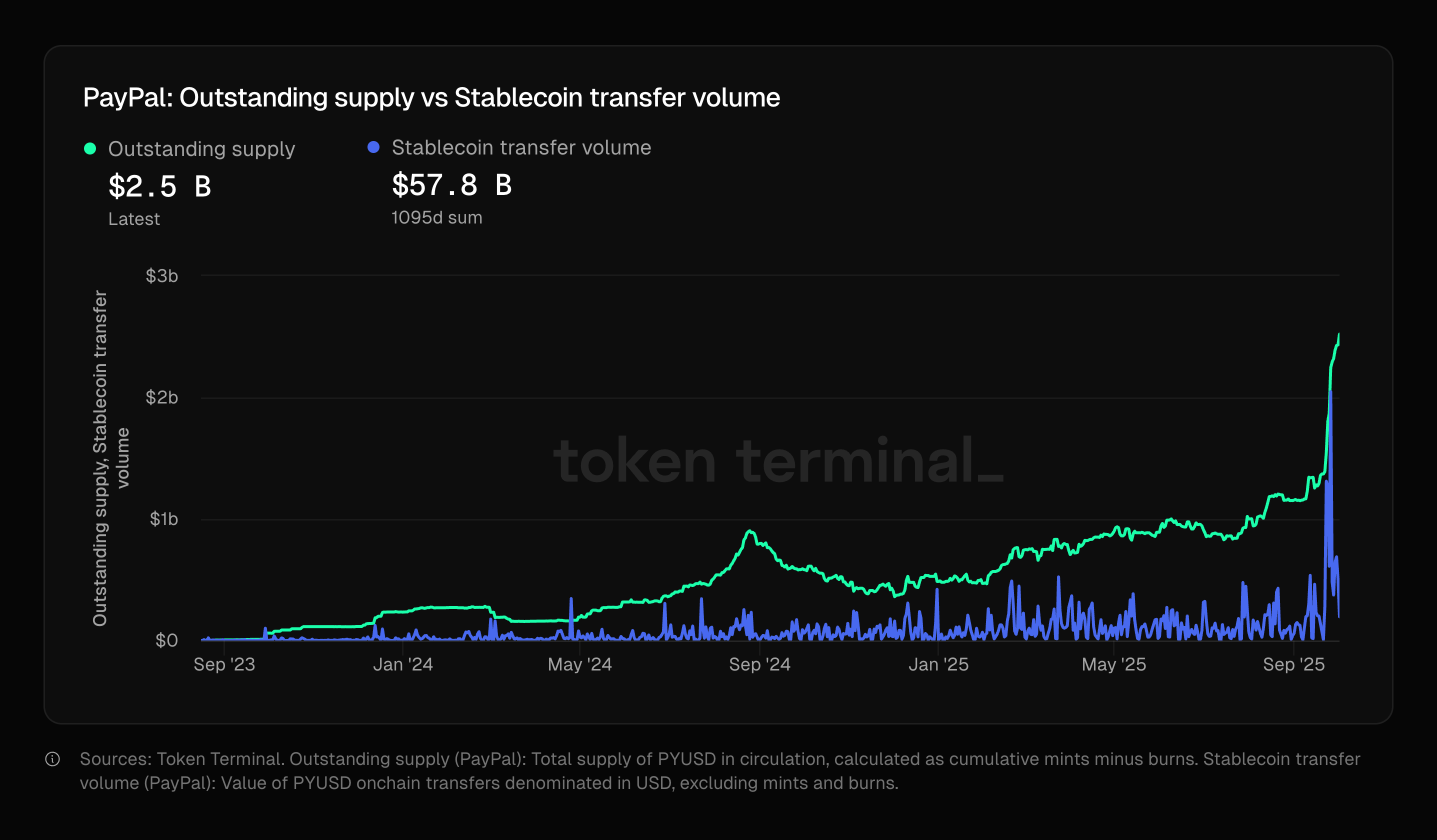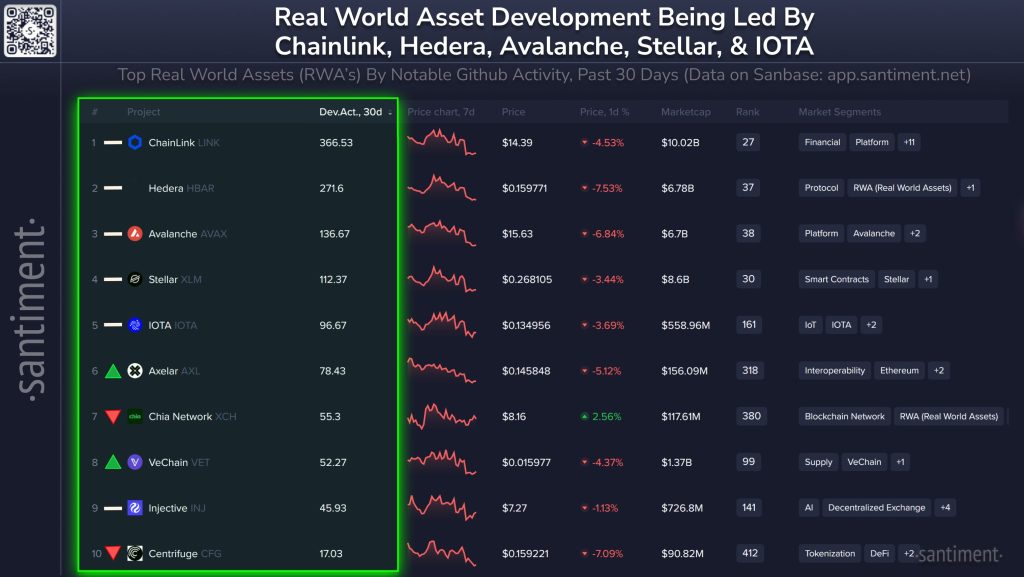PayPal’s PYUSD stablecoin supply doubles to $2.5b in a month
PayPal’s PYUSD supply has surged 113% month-over-month, hitting an all-time high of $2.54 billion.
- PayPal’s PYUSD stablecoin doubled its circulating supply, reaching $2.54 billion
- Over the past month, the token’s supply surged 113%
- USDT and USDC still dwarf all other stablecoins combined
PayPal’s stablecoin PYUSD has broken out of its quiet launch phase. On Friday, Oct. 3, the stablecoin reached an all-time high in circulating supply at $2.54 billion. Over the past month, this figure rose 113%. At the same time:
 PayPal’s PYUSD outstanding supply and stablecoin transfer volume | Source: Token Terminal
PayPal’s PYUSD outstanding supply and stablecoin transfer volume | Source: Token Terminal
A circulating supply of $2.54 billion puts PYUSD in seventh place among stablecoins, behind USDe, USDS, DAI, and USD1. Much of that supply, specifically $1.84 billion, is on Ethereum (ETH) . At the same time, $624 million worth of PYUSD is on Solana (SOL) .
PYUSD transfer volume peaked at $2 billion daily on Sept. 26, according to data from Token Terminal. So far, the stablecoin has facilitated almost $60 billion in total transfers. PYUSD has also reached a milestone of 40,000 holders, a figure that has risen consistently since January 2025.
Still, giants Tether and USDC continue to dominate the market, with $176 billion and $75.9 billion in circulating supply. Together, they account for almost 85% of all circulating supply. PYUSD itself accounts for 0.84% of the stablecoin market.
PYUSD stablecoin is taking off
At launch, many called the PYUSD stablecoin a “nothing burger” , citing its limited reach beyond the PayPal and Venmo ecosystem. Still, the firm has worked on decentralizing PYUSD, enabling users to send to external wallets and holding it non-custodially.
PYUSD’s all-time high coincided with the stablecoin market cap breaking the total value of $300 billion. U.S.-denominated stablecoins lead the charge, with USDC growing rapidly. What is more, the monthly stablecoin transfer volume reached $3.27 trillion.
Disclaimer: The content of this article solely reflects the author's opinion and does not represent the platform in any capacity. This article is not intended to serve as a reference for making investment decisions.
You may also like
Zcash Latest Updates: Ongoing ZEC Shortfall and Popcat Incident Put Pressure on Hyperliquid's Liquidity
- Hyperliquid's ZEC short position, $28M notional, has seen losses shrink to $9.5M as whale adds to bets during price rallies. - Same whale holds $27M ETH short with $5.5M unrealized profit, showcasing cross-asset hedging through leveraged positions. - Popcat (POPCAT) trading loss of $4.9M triggered by meme coin collapse forced manual liquidation, damaging Hyperliquid's reputation. - HYPE token's futures open interest dropped $500M since October, reflecting waning confidence amid infrastructure concerns an

SFC Head's Prolonged Tenure Strengthens Hong Kong's Fintech Overhaul with Lion Rock Spirit
- Hong Kong's SFC extended CEO Julia Leung's term until 2027 to ensure continuity in fintech reforms and digital asset regulation. - Leung's leadership aligns with Hong Kong's 3.8% Q3 GDP growth and revised 3.2% 2025 forecast, reinforcing its financial hub status. - Local startup StarFive's Lion Rock RISC-V chip, adopted by Huawei, highlights Hong Kong's push for tech-driven economic diversification. - SFC faces balancing act as Uber Hong Kong advocates flexible driver quotas amid evolving ride-hailing reg

Zcash Halving: Exploring the Impact of Supply Dynamics and Market Sentiment on the Altcoin Ecosystem
- Zcash (ZEC) underwent its 2025 halving, cutting block rewards by 50% to 1.5625 ZEC, triggering a 20% price surge and renewed focus on scarcity-driven value. - The event reduced annual inflation to 4%, boosted institutional adoption (e.g., $137M Grayscale Trust), and highlighted Zcash's privacy-driven utility with 27–28% shielded transactions. - ZEC outperformed Bitcoin in Q4 2025, peaking at $712, as institutional demand (e.g., $50M Cypherpunk purchase) and privacy tools like Zashi wallet drove adoption

RWA Tokens Set for a Major Breakout? Santiment Data Shows Developer Momentum Surging

